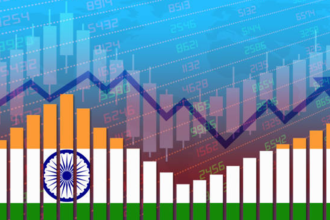The United States and Japan have achieved a major new agreement that will strengthen their trading relationship. People are calling the US-Japan trade deal a historic agreement that will change the way these two huge economies do business with each other. Japan has promised to invest $550 billion in the US and let American goods into its markets. This arrangement is likely to bring big long-term benefits to both countries.
During an event at the White House, US President Donald Trump called the deal “massive,” stressing how big and important it is. Shigeru Ishiba, the Prime Minister of Japan, said the news was good for both economies. However, the deal comes at a politically sensitive time for Japan because Ishiba is under a lot of criticism at home after losing the last election.
What Are the Most Important Parts of This Trade Deal?
The US-Japan trade accord is based on a shared goal to improve economic cooperation through investment and access to each other’s markets. Japan will put hundreds of billions of dollars into the US economy and let more US items, such as cars, farm commodities, and other exports, into its markets. A crucial part of the deal is the introduction of a 15% reciprocal tariff that will apply to numerous types of commerce. This is meant to even out trade between the two countries.
President Trump said the deal was fair and that it had been “long and hard” to negotiate so that both sides would profit. He said that this deal is one of the biggest trade deals ever made between Japan and the US, showing how much the two countries’ economies depend on each other. Here is the link to our article on US-Japan Diplomacy
What will happen to tariffs and trade in vehicles because of the agreement?
One of the most important parts of the trade pact between the US and Japan is that it lowers US tariffs on Japanese cars and auto parts. The deal cuts tariffs from 25% to 15%. This is likely to increase commerce in the automotive sector. The Prime Minister of Japan, Ishiba, said that Japan is now the first country in the world to get these kinds of tariff cuts from the US without any limits on the number of goods or the amount of goods.
Japan has decided not to lower its tariffs as part of this accord, though. This choice shows that Tokyo’s top objective is to preserve its industry while encouraging goodwill by buying more US goods. The decision is likely to help US carmakers, rice farmers, and other exporters who want to do more business in Asia.
Why did this deal happen now?
The timing of the trade pact between the US and Japan has a lot to do with both politics and the economy. President Trump said earlier this year that Japanese exports could be hit with a 25% tax if a new trade deal wasn’t negotiated by August. This looming threat sped up negotiations and eventually made the transaction possible.
Japan had also just encountered political problems in its upper house elections. The Liberal Democratic Party of Prime Minister Ishiba lost its majority, which made people question his leadership. The deal’s successful conclusion may help build popular support and change the story about his administration to focus on economic diplomacy. Here is the link to our article on Trade Deal Progress
What did the deal do to the world’s markets?
The news had an immediate effect on financial markets, notably in Japan. The Nikkei 225 index in Tokyo jumped by more than 3% after the news. Leading car firms, including Toyota and Honda, and Nissa, saw their share prices rise sharply due to hopes of more export prospects and lower tariffs.
Analysts argue that this reaction shows that investors believe the deal would be good for the long term, especially for industries that depend on global commerce and production. It also suggests that commerce might become more stable following months of uncertainty caused by threats of tariffs and geopolitical tensions.
What does this mean for the US’s economic plan?
The US-Japan trade accord is part of a bigger effort by the US to change the terms of its trade with its most important allies. President Trump said that a similar deal with the EU would be announced soon. This shows that he has a bigger plan to enhance trade and lower deficits.
The pact lets the US push its economic agenda while avoiding tariffs that would hurt both sides. For American businesses, especially those in agriculture and industry, it opens up a new way to contact Japanese customers and grow their business around the world.
Final Thoughts
The trade deal between the US and Japan is more than just an economic agreement; it shows that the two countries want to work together and grow. The US-Japan trade deal highlights how solid the relationship is between Washington and Tokyo by lowering tariffs, making big investments, and focusing on fair trade. This accord lays the stage for future trade partnerships based on common interests and smart diplomacy as global markets change and new economic coalitions arise.








